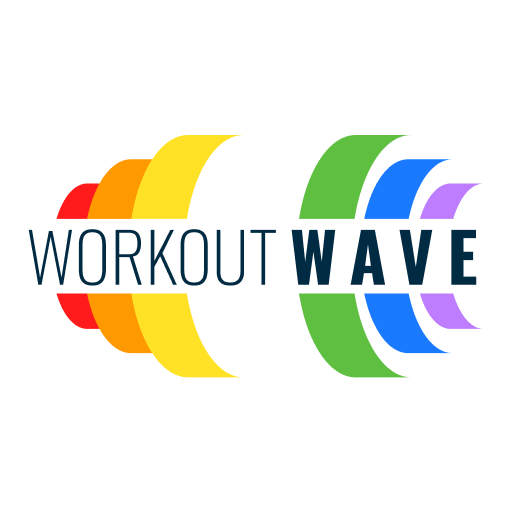Fitness Revolution: AI Can Now Predict (and Prevent) Your Next Workout Injury
Introduction: The AI Revolution in Fitness
Picture this: You’re about to perform a deadlift, and suddenly, your smartwatch vibrates, warning you about potential form issues that could lead to injury. Welcome to the future of fitness, where artificial intelligence (AI) is your personal injury prevention coach and rehabilitation guide. As we dive into the world of AI-powered fitness, prepare to discover how this technology is revolutionizing the way we approach our workouts, prevent injuries, and recover faster than ever before.
Understanding AI in Fitness: More Than Just a Fancy Gadget
Artificial Intelligence in fitness goes far beyond counting steps or tracking heart rates. It’s about creating a personalized, adaptive fitness experience that evolves with you. Here’s how AI is making waves in the fitness world:
- Real-time Form Analysis: AI-powered cameras and sensors can analyze your movement patterns during exercises, providing instant feedback on your form.
- Predictive Injury Prevention: By learning your workout habits and physical condition, AI can predict potential injury risks and suggest preventive measures.
- Personalized Workout Adjustments: Based on your performance, recovery, and goals, AI can dynamically adjust your workout plan to optimize results while minimizing injury risk.
- Smart Rehabilitation Programs: For those recovering from injuries, AI can create and monitor tailored rehab programs, ensuring safe and effective recovery.
The Science Behind AI-Powered Injury Prevention
At the heart of AI-powered fitness tools are sophisticated machine learning algorithms. These algorithms process vast amounts of data, including:
- Historical workout data
- Biomechanical principles
- Latest sports science research
- Individual user characteristics (age, fitness level, injury history)
By analyzing this data, AI can identify patterns and potential risk factors that might escape the human eye. For instance, it might detect subtle imbalances in your squat form that could lead to knee problems down the line.
AI in Action: Real-World Applications
Let’s explore some exciting ways AI is being integrated into fitness routines:
- Smart Wearables: Advanced fitness trackers and smartwatches now use AI to provide real-time feedback on exercise form and intensity.
- AI-Powered Fitness Apps: These apps use computer vision to analyze your movements through your smartphone camera, offering form corrections and personalized workout plans.
- Intelligent Gym Equipment: Some cutting-edge gyms now feature machines that use AI to adjust resistance and provide feedback based on your performance.
- Virtual Personal Trainers: AI-driven virtual trainers can guide you through workouts, adjusting routines based on your progress and feedback.
The Role of AI in Rehabilitation
When it comes to recovery, AI is a game-changer. Here’s how:
- Personalized Recovery Plans: AI can create tailored rehabilitation programs based on your specific injury, fitness level, and progress.
- Progress Tracking: Through constant monitoring, AI can track your recovery progress and adjust your rehab plan accordingly.
- Motivation and Adherence: AI-powered apps can provide encouragement and reminders, helping you stick to your rehab program.
- Risk Assessment: By analyzing your movement patterns during rehab exercises, AI can help prevent re-injury by flagging potentially harmful movements.
Limitations and Ethical Considerations
While the potential of AI in fitness is enormous, it’s important to approach it with a balanced perspective:
- Human Expertise is Irreplaceable: AI should complement, not replace, the expertise of human trainers and physiotherapists.
- Data Privacy Concerns: With AI collecting sensitive health data, ensuring user privacy and data security is paramount.
- Overreliance on Technology: It’s crucial to maintain body awareness and not become overly dependent on AI guidance.
- Accessibility Issues: High-end AI fitness tools may not be accessible to everyone, potentially creating a technology gap in fitness.
Embracing the Future: How to Incorporate AI into Your Fitness Routine
Ready to step into the future of fitness? Here are some ways to get started:
- Invest in a smart fitness tracker or smartwatch with AI capabilities.
- Try out AI-powered fitness apps that offer form analysis and personalized workouts.
- If available, use AI-enabled equipment at your local gym.
- Combine AI insights with guidance from human fitness professionals for a comprehensive approach.
Conclusion: A Smarter Way to Train
AI-powered injury prevention and rehabilitation represent a significant leap forward in the fitness world. By leveraging the power of machine learning and data analysis, we can train smarter, recover faster, and achieve our fitness goals with reduced risk of setbacks. As this technology continues to evolve, it promises to make personalized, science-based fitness guidance more accessible than ever before.
Remember, while AI is a powerful tool, it’s most effective when combined with human expertise and your own body awareness. So, embrace the future, but don’t forget to listen to your body and seek professional advice when needed.
Ready to experience the future of fitness firsthand? Consider using WorkoutWave, which integrates cutting-edge AI technology to help you optimize your workouts, prevent injuries, and achieve your fitness goals more effectively. With WorkoutWave, you can wave hello to smarter, safer fitness routines powered by the latest in AI technology.





